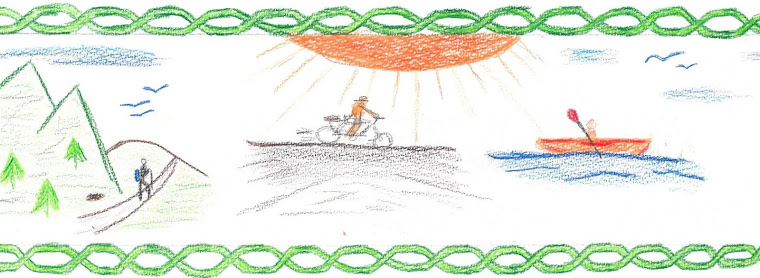I commuted to work this Friday morning,
the first Friday and my first morning commute after hurricane Sandy turned the
New York/New Jersey area into a disaster area.
 |
| A gas station without gas in Brooklyn, New York |
This morning’s travels were less problematic than I expected. Busess are running, but not all subways are yet operating. After missing my bus by less than a
minute, I walked to the closest Subway, only to discover that it was not running
this far west. The gas station across the
street from the subway station was out of gas, yellow tape blocking access to
the pumps. Gas stations that used to
have gas have run dry because resupplies are not flowing. Stations with gad
cannot pump it because they do not have electricity to power the pumps.
 |
| Empty New York Subway Station |
After an initial delay, I finally caught
another bus and surprisingly made up for lost time, arriving at work only 15
minutes late. The two buses I rode were not overly crowded, less crowded than
some normal commutes. The streets seemed to be less congested with traffic than
usual, probably because there still was no school and gas is in short supply.
What I discovered once I arrived at work brought Sandy’s
impact a little closer to home, or rather work.
In addition to serving as the half-time Pastor of a small Presbyterian
Church (U.S.A.) congregation in Flushing, Queens, I also work part time as a
GED Instructor for a Social Service agency in Jamaica, Queens. The agency serves 16-21 year olds, most high
school dropouts, providing them with vocational services.
 |
| a New York bus finally arrives |
The GED classroom in which I teach
is a corner room on the seventh (top) floor of one of the highest buildings in
the neighborhood. One wall faces south, looking out toward JFK Airport. The
other wall faces east, looking out toward Aqueduct Race Track and Long Island.
At some point during the height of Sandy's fiercest winds, a south facing window
blew in, covering the floor with glass.
With an entry to the building, hurricane force winds blew into the
classroom, blowing out ceiling tiles, distributing old paint chips, and scattering
papers throughout the room. One of two black boards was ripped from the wall.
The room I walked into this morning obviously was not able to be used as instructional space. I hope it can be cleaned and repaired by
next Monday.
I think the window that blew in and
broke bore the brunt of Sandy's hurricane force winds, as the fiercest winds
would have blown from the south-east and east during the height of the storm.
There are no neighboring buildings more than two stories high to act as
windbreaks. With an 85 mph wind gust officially recorded at nearby JFK during
the height of the storm, I am surprised only one of the classroom windows blew
in.
 |
| Doorway view of hurricane's aftermath |
Once my co-workers starting
arriving, they too surveyed the damage.
Then we started talking about our recent experiences. We shared personal storm stories, cell phone
photos of flooding and downed trees, and tales of death and survival we had
learned about from various media outlets. I learned that two of
my coworkers were still without power.
My supervisor had her power restored just the night before. Another
co-worker was unable to make it to work because the Subway is only partially
operating.
Because of my experiences this first
Friday after Sandy, I have come to realize, or admit to myself, that even
though my family’s health and property were not adversely impacted by Sandy, we
are living in the midst of a disaster area.
I was beginning to sense this reality as early as yesterday.
Both local and national media have
been filled with stories and images of death and destruction. For example, an entire neighborhood of
Queens, over 110 homes in Breezy Point, a geographical point I have sailed past
numerous times, lie in smoldering rubble.
The devastation on Staten Island, New York City’s southernmost borough, through which we drive on our way to the Jersey Shore, is only now coming to light, four days after Sandy struck. More people died on Staten Island, 22, than any state other than New York.
The devastation along the Jersey
shore, where we have family and friends and have often enjoyed the beaches, just an hour or two (depending on the traffic) south from New York City,
is catastrophic. Some residents who
remained behind on barrier islands along the coast of New Jersey are just now
being forced to evacuate and may not be allowed to return home for up to six
months. Those that evacuated before the storm hit are being allowed to return.
While power has been restored to
most of lower Manhattan, some people who lost power because of Sandy’s wind,
tidal surge, and snow may not have power restored for up to a week to ten days. Roads, tunnels, and bridges are impassable,
if they still exist. Gasoline is almost impossible to come by cell phone service has just recently returned to near normal.
A little over eleven years ago, New
York City and the area surrounding it suffered the loss of over a thousand
lives when the World Trade Towers tumbled to the ground. As massive as that disaster was and as many
families and communities it affected, the physical destruction and impairment
of infrastructure was limited to Lower Manhattan.
While Sandy has (so far) claimed a little
over ninety lives, more lives have been adversely affected, more people left
without power, more people left homeless, cold, and hungry, than on 9-11. While Sandy toppled no skyscrapers, the
damage to and loss of infrastructure over a vast geographic area has been much
more disruptive than the collapse of the Twin Towers.
Yep, I now live in a disaster area.

